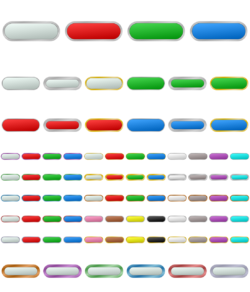
This blog post, with some changes made, was originally published in September 2017
When I copyedit, I see all kinds of lines and spaces that are supposed to be dashes. And, as I am probably guilty of myself, the overuse of the mighty dash. But this post is not about appropriate use of dashes or how many you use…
This post is about the difference between hyphens and dashes (both en dashes and em dashes) and how to make them on your keyboard. By the way, there is generally no space around hyphens or dashes.
Hyphen: This is the short one that you will find on your number pad or the top row of your keyboard. I have a Mac Air, and on my keyboard it is on the top row. Hyphens are used in some compound words and to divide a word at the end of a line. Only one keystroke is required to make a hyphen. Examples: Self-taught, ex-husband.
En Dash: This is the medium-length line that requires a little more work to create. The en dash is used for minus signs and date ranges. However, many people use it as a long dash, which it isn’t. Many people type two hyphens in a row to create an en dash. Sometimes your computer will put them together to make something longer than a hyphen; sometimes it won’t. The most frequent place to find en dashes is in indexes (page ranges) and math books (minus signs). The en dash is made on my Mac is by holding down the alt (or option) key and pressing the hyphen. Examples: 1950–1960, 20–10=10.
Em Dash: This is the long dash that is used in text. Technically, it is used to indicate a big break in thought in a sentence. It is longer than the en dash. The hyphen requires one keystroke, the en dash requires two keystrokes, and the em dash requires three keystrokes, at least on my keyboard. To make an em dash, hold down the shift key and the alt (option) key, and then press the hyphen. Example: I finally found my glasses—they were underneath the sofa cushion—after getting along fine without them for three weeks. Hint: Make sure your em dashes are in the correct places in your sentence by reading the sentence without the text that is within the dashes. The sentence should make sense. And while ellipses (. . .) are used to indicate trailing off at the end of a sentence, em dashes are used in dialog to indicate someone being interrupted by another speaker:
“I told you I wanted to—”
“I can’t listen to you now!”
Why are they called en and em dashes? They are measurements in typography: An em is a unit equal to the currently specified point size. For example, one em in a 16-point typeface is 16 points.
Next Week – Part 2 of My Life in Books
And now a few favors to ask:
Please send me an e-mail at bigwords101@yahoo.com with your favorite book or books for a future blog post.
If you are not already a subscriber to this blog, why not subscribe? It’s free and you get a free book download.
If you have any of my books, an Amazon review is greatly appreciated. Reviews sell books!
If you have any ideas for future blog posts, please let me know!



Can’t an ellipse be used within a sentence, and not just at the end? And if it’s at the end, shouldn’t it be four dots, as in …. with the final dot being a period to end the sentence?
Love the post!
Love all your posts!
Yes, an ellipsis can be used in the middle of a sentence to indicate missing information. If it is at the end, it is four dots if it is the end of the sentence. However, most of the time, the ellipsis is used at the end of a sentence to indicate a trailing off, not finishing the sentence, and in that case it is three dots. And that is why I don’t like ellipses!